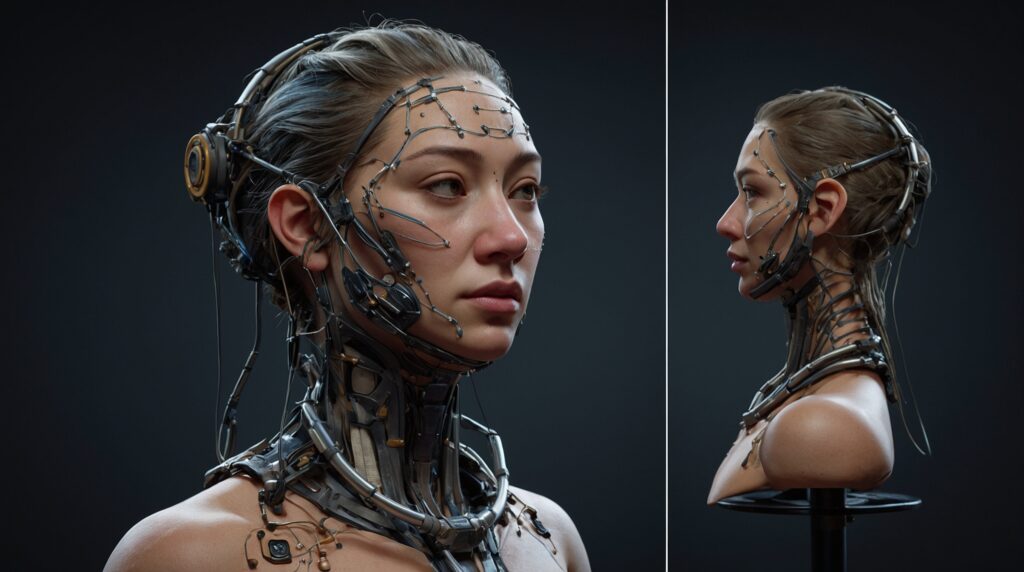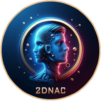
As technology continues to evolve, so too does the art of character rigging in digital media. At 2DNAC, we’re always looking ahead, exploring the potential advancements that could revolutionize how we create and animate humanoid creatures. In this post, we’ll discuss some of the exciting possibilities for future facial and body rigs and how they can enhance the realism and efficiency of character animation.
Next-Generation Facial Rigs
Dynamic Muscle Systems: Future facial rigs could incorporate dynamic muscle systems that simulate the underlying musculature of the face. By mimicking the actual behavior of facial muscles, these rigs can produce more natural and nuanced expressions. This would allow animators to create subtler and more realistic animations, capturing even the smallest emotional cues.
AI-Driven Expression Recognition: Integrating artificial intelligence into facial rigs could enable real-time expression recognition and animation. AI algorithms can analyze an actor’s performance and automatically generate corresponding facial animations. This not only speeds up the animation process but also ensures a high degree of accuracy and realism.
Procedural Animation: Procedural animation techniques can be used to generate facial expressions based on predefined rules and parameters. This allows for more flexible and adaptive animations that can respond to different scenarios without requiring manual keyframing. For example, a character could dynamically adjust their facial expressions based on their emotional state or interactions with other characters.
High-Fidelity Skin Simulation: Future rigs could feature advanced skin simulation techniques that account for the deformation and movement of skin over underlying structures. This includes simulating wrinkles, folds, and skin elasticity, resulting in highly realistic facial animations. These systems could also respond to environmental factors, such as lighting and moisture, for even greater authenticity.
Innovations in Body Rigs
Full-Body Muscle and Skeletal Systems: Like dynamic facial muscle systems, full-body rigs could incorporate detailed muscle and skeletal simulations. This would allow for more realistic body movements and deformations, accurately reflecting how muscles stretch, contract, and interact with bones. Such rigs could also simulate the effects of weight and inertia on the body, enhancing the believability of animations.
Real-Time Physics Integration: Integrating real-time physics engines into body rigs can provide more realistic interactions with the environment. Characters could dynamically respond to forces such as gravity, collisions, and impacts, resulting in more lifelike movements. This can be particularly useful for action scenes and complex interactions, where manual animation would be time-consuming and less precise.
Adaptive Motion Capture: Future rigs could leverage adaptive motion capture technology, which adjusts the captured data to fit the character’s unique proportions and movements. This ensures that motion capture performances are accurately translated to characters of different sizes and shapes, maintaining the integrity of the actor’s performance.
Enhanced IK/FK Systems: Inverse kinematics (IK) and forward kinematics (FK) systems are essential for animating character limbs. Future advancements could see more intuitive and responsive IK/FK blending, allowing animators to switch seamlessly between the two methods. This would provide greater control and flexibility, particularly for complex movements such as acrobatics or intricate hand gestures.
The Impact on Character Animation
Increased Efficiency: The integration of AI and procedural techniques can significantly reduce the time and effort required for animation. Animators can focus more on creative aspects, knowing that the underlying systems are handling much of the technical work.
Higher Realism: Advanced muscle and skin simulations, along with real-time physics, will result in characters that move and behave more like real living beings. This enhances the overall immersion and emotional impact of the media.
Greater Flexibility: Adaptive systems and enhanced IK/FK blending provide animators with more tools to create diverse and complex animations. Characters can perform a wider range of actions and interact more naturally with their surroundings.
Seamless Integration: Future rigs will allow for smoother integration of facial and body animations, ensuring that the entire character moves cohesively. This holistic approach will improve the overall quality and consistency of character performances.
At 2DNAC, we are excited about these potential advancements and are committed to exploring and implementing the latest technologies in our work. By staying at the cutting edge of character rigging, we continue to push the boundaries of what’s possible, delivering lifelike and compelling animations that captivate audiences.
For more insights into our work and to see examples of our innovative character rigs, visit our portfolio and blog.
